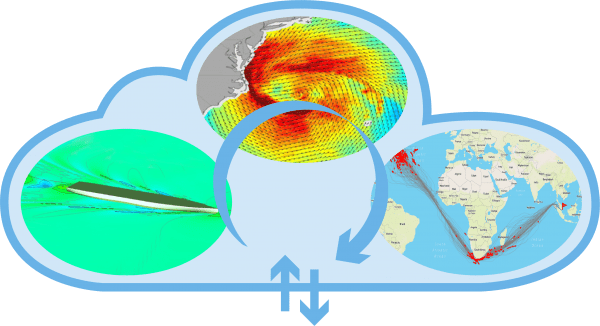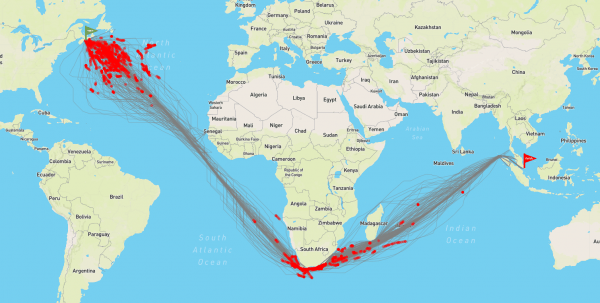SafeTrans as a Service!
Voyage simulations are an important aid in design choices, operational decisions, risk assessments, schedule predictions and many other activities. With increasing standards regarding safety, fuel consumption/CO2 emissions and scheduling accuracy, combined with increasing computational power, the significance of simulations in the maritime sector’s daily practice keeps growing.
Within a Joint Industry Project MARIN has developed SafeTrans as a voyage simulation tool for designing and analysing heavy cargo transports around the world. The SafeTrans user can configure ships, loading conditions, routes and voyages to use in long-term time-window simulations that predict speed, motions and cargo lashing forces at specified time intervals.
The simulations include environment effects such as ocean currents, wind and waves. These environment factors are obtained from weather databases. Apart from their direct influence on motions, SafeTrans features a Captain’s Decision Mimic (CDM), which resembles the behaviour of captains, including their decisions about the best way to operate safely and maintain the operation planning. The CDM uses weather forecast data to choose an alternative route (see image) or to seek shelter at a port close to the route. Additionally, the CDM can decide to reduce engine settings in case motions become too strong.
Towards a web-based application
Until now, SafeTrans is a Java-based desktop application, installed locally on the user’s computer. In 2020, a major refactoring of the software has been set in motion. As one of MARIN’s first software tools, SafeTrans now becomes a web-based application that will run as a service on a server. The user can access SafeTrans with a local browser but can finally also integrate (parts of) SafeTrans in their own software. This step offers many advantages, for instance the availability of (parallel) computational power and data storage. With simulations running on a secure and powerful server, rather than on local laptops, more simulations can be conducted with higher quality results.
In addition, multiple simulations can be run in parallel, and the user does not need to keep the computer turned on while waiting for results: they will be stored on the server once the simulations have completed.
Another advantage is that the application can be used from a browser or as a service in other software, without the need for installation. This makes it much easier for new users to try the software on a trial basis. It also solves possible compatibility issues and users don’t need a powerful PC located at the office, but can use the software from home – which is a plus given that many people have to work from home nowadays.
Technology
During 2020 and 2021, SafeTrans will be refactored into a web-based application. The core of the server-side application is based on Python. Heavy workloads, such as the actual voyage simulations or ship motion calculations are distributed into a task queue. On the server multiple services (Docker containers) work together to form SafeTrans:
1. The calculation of ship motion/force responses in waves with SHIPMO
2. Weather data from forecast and hindcast databases
3. Voyage simulations using realistic captain responses on ship behaviour, motion limits and weather forecasts
4. Data aggregation for analysis by the user
For users, the server exposes a GraphQLbase API. This API is used by the SafeTrans web application to configure simulations and show the results. This web application is built using the ReactJS javascript framework. As well as this, advanced users can develop custom tools that communicate directly with this API.
With web applications and services like SafeTrans, MARIN will be future-proof. More APIs will be developed allowing MARIN to share knowledge and tools, and support the maritime sector in a modern, innovative way.
Progress
A significant part of SafeTrans has already been transformed into a webbased application. It is already possible to configure a self-propelled ship, perform a motion response calculation using SHIPMO, then simulate that configuration along a route between any two points on the map. In 2021, the aim is to complete SafeTrans by including the CDM, a tug-tow based ship configuration and various methods to analyse simulation results.
Interested?
If you would like to know more about SafeTrans or the applied technology, feel free to contact us. We are also open to suggestions for other web-based APIs.



